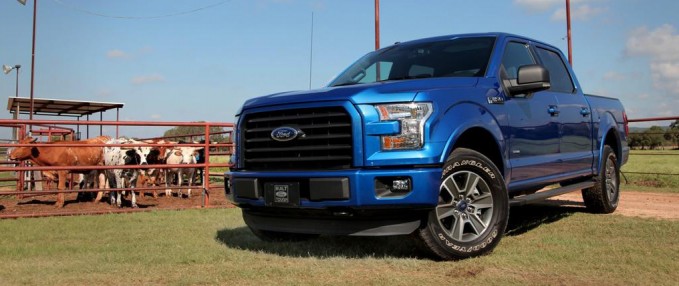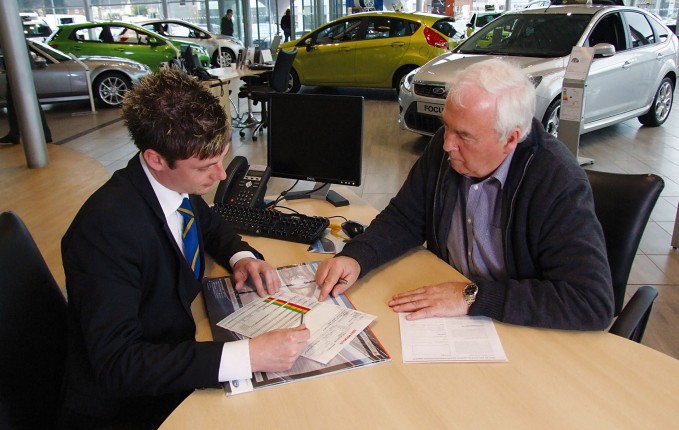Whether they deserve it or not, dealerships often have less-than-favorable reputations.
Historically both the crooked tactics and unsavory characters they’ve employed have led to fractured relationships between dealers and the customers they were supposed to serve.
Highlighting some of the nefarious things that can – and have – happened we published a story not long ago exploring some dealership horror stories.
SEE ALSO: What Really Goes on at Car Dealerships
But not all car buying experiences are negative. In the interest of fairness, we’ve decided to follow up with this post, one that aims to explore the positive side of dealership experiences. To see what really goes on in modern showrooms and to get some tips on how to find the right dealer, we reached out to two experts in the field. Curiously they’re located on opposite sides of the country.
Top-Tier Treatment
Joseph Wade, new car sales manager at Schaeffer BMW in Wilmington, North Carolina said the whole car-buying process is “about building a relationship with the customer.” Continuing he said, “It can’t all be about the transaction.”
 “We try to become a concierge to our customers,” said Wade, a person who is there to answer any questions an owner may have and to help them in every way possible.
“We try to become a concierge to our customers,” said Wade, a person who is there to answer any questions an owner may have and to help them in every way possible.
To ensure drivers are comfortable with their new BMWs Wade said the automaker has a special training course called the Encore Program. Basically customers are invited back to the showroom with their car. The vehicle gets detailed and a full tank of fuel while the owner receives special training to help understand the technology in their vehicle. Wade also mentioned this gives the salesperson another touch point with the buyer and allows them to really build a relationship.
After all, Wade said they’re responsible for how happy their buyers are because the automaker sends surveys out. “It’s a series of questions and BMW holds us accountable for a very high level of customer satisfaction.”

BMW is a top-tier luxury brand; their customers have high expectations. When asked if buyers can get superb treatment from dealers selling more mainstream brands Wade said, “It is absolutely not out of the realm of possibility.”
No. 1 in the World
Moving to the America’s opposite coastline, Terry Miller is the general manager of Galpin Ford in Los Angeles, California. They’ve been the No. 1 blue-oval store in the world for the last quarter century. In order to remain so dominant they’re clearly doing something right, and have been for decades.
 “At Galpin we love cars … we love doing what we do,” said Miller. “I wake up every morning loving to come to work [even] after 28 years.” We should all be so lucky, to as thoroughly enjoy what we do for a living as he does. His enthusiasm, which was apparent during my telephone interview with him, is part of how they keep people coming back for more.
“At Galpin we love cars … we love doing what we do,” said Miller. “I wake up every morning loving to come to work [even] after 28 years.” We should all be so lucky, to as thoroughly enjoy what we do for a living as he does. His enthusiasm, which was apparent during my telephone interview with him, is part of how they keep people coming back for more.
Miller said this attitude “creates a lot of that loyalty” and accordingly they often deal with generations of customers, as repeat buyers come back for another Ford and word of mouth brings new folks in the door. “Our reputation has a lot to do with our success,” he said.
Undoubtedly a friendly staff is key, one that listens to potential buyers and doesn’t pressure them. “Everybody’s mindset is, we want to take care of the customer,” said Miller. When asked about shady transactions or other underhanded activities that dealerships are sometimes known for he said, “We don’t put up with anything like that.” He also said, “Trust is the key,” and it’s something they aim to build with every buyer.

“My father was in the car business back in the ‘50s and ‘60s; the business was a lot different,” said Miller. “I don’t think back then they had the same mindset,” and that could be a big reason dealers have such sullied reputations, even today.
Secret Sauce, Clandestine Condiments
“A car purchase is a lot of money regardless of the economic standing of the customer. If it’s $15,000 or half a million, it’s a lot of money,” said Wade. “It’s an emotional purchase, too,” he said, and every buyer deserves to feel good about what they’ve bought.
It’s not easy delivering the best customer experience possible. Having a well-trained staff is critical. Wade said, “It comes down to the quality of the people the dealership hires. And that’s true of every industry.”
SEE ALSO: Tips from a Salesman on How to Buy a Car
Selling cars is stressful and challenging, which Wade said results in a lot of turnover. “The salespeople get caught in the middle … [it’s] not for everyone.” They’re trapped between management that needs to sell as many cars as possible as profitably as they can and customers that want to pay as little as they can get away with. “It’s a very high-stress business.”
Employee turnover in the car-sales world can be high but it’s not an issue at Galpin. Miller for example has been there nearly three decades. “We have tenure here at the dealership,” he said and consequently turnover is “very, very low.” Encouraging people to stay, “We promote all of our employees from within.” It’s probably safe to assume happy employees lead to happy customers.
Steering Clear of Trouble
So how can you – the car-buying public – avoid getting “knocked over the head” by a devious dealer? Wade offered some sound advice. “One obvious way is to check out the reviews online,” but he cautioned you shouldn’t just read the first two or three comments because most people won’t go on a review site unless they’re disappointed, which can skew the results.
After this Wade said the best thing to do is visit a dealership you’re considering. Look around, see how it’s run and take note of how the staff acts. He said customers can pick up on tension if any is present.
Wade also suggests you, “Talk to people that are already doing business [with the dealership],” he said. “Maybe even talk to a customer that’s waiting in service.” These people are generally having a bad day, inconvenienced by vehicle issues or maintenance. However, if they’re happy with the way the dealer’s treated them, then it could be a store worth shopping at.

Additionally it can be prudent to chat with the sales manager or even general manager of a dealership. Wade said, “Do your research in person just as diligently as you’d do research online.”
Of course finishing your homework is no guarantee of a perfect experience. If you do end up with a salesperson you don’t like it’s ok to break things off, though Wade said, “That doesn’t necessarily mean you need to go to a different dealership.” Chances are they can easily find you another sales rep to work with.
Situations like these are “not common,” said Wade, noting that it happens very rarely at their store. “But industry-wide I don’t think it happens enough.” He said a lot of salespeople think they can handle any customer or situation but, “It’s simply not true.”
Proven Results
At Galpin the product of their customer-focused mentality is strong sales and repeat business. “We are above the national average as far as customer satisfaction [is concerned],” said Miller.
Because of its success they can do things other stores are unable to. “Most dealers can’t deliver the kind of service to the customer [that we can],” Miller said, though he made it clear he did not want to boast about this. “I really feel uncomfortable; I don’t want to say anything negative about other dealers,” though he did say that Galpin simply does it better.
Likewise Wade said, “We try to make it an experience.” If you treat people right, “You get a customer for life … [and] that’s huge.”
Check out our Tips and Advice section.



Leave a Reply